CRAB SPIDER'S DINNER
The main protagonists of today's arachnid-themed post are two species from the Thomisidae family. But you'll also see two different spiders here. From the Araneidae and the Theridiidae family respectively.
Thomisidae is a very distinctive-looking group of spiders, commonly known as crab spiders. They are ambush predators, and most of them rely on very effective camouflage in their hunting.
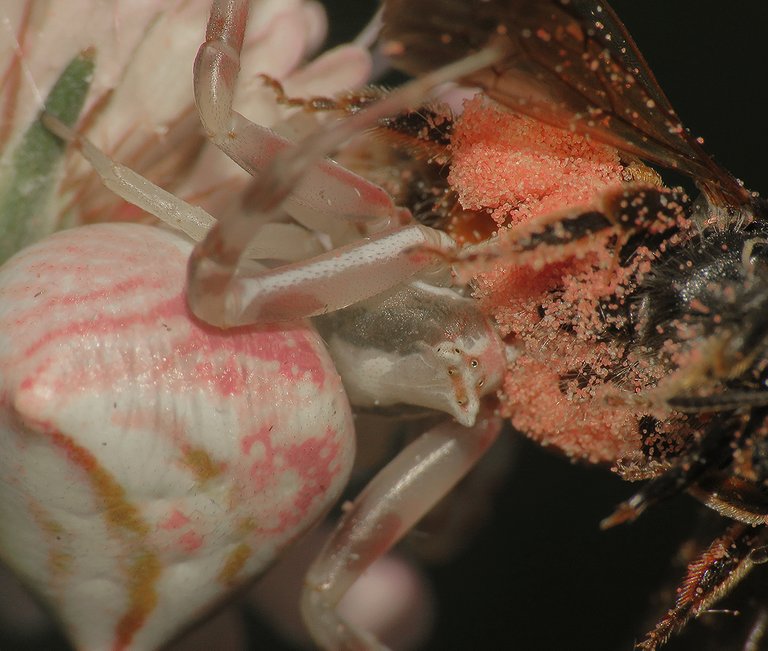
Here you can take an up-close look at the first of the two Thomisidae. The Thomisus onustus female ...
... that has caught a bee. While the prey is clearly visible in these photographs, it isn't so easy to distinguish the spider from the flower.
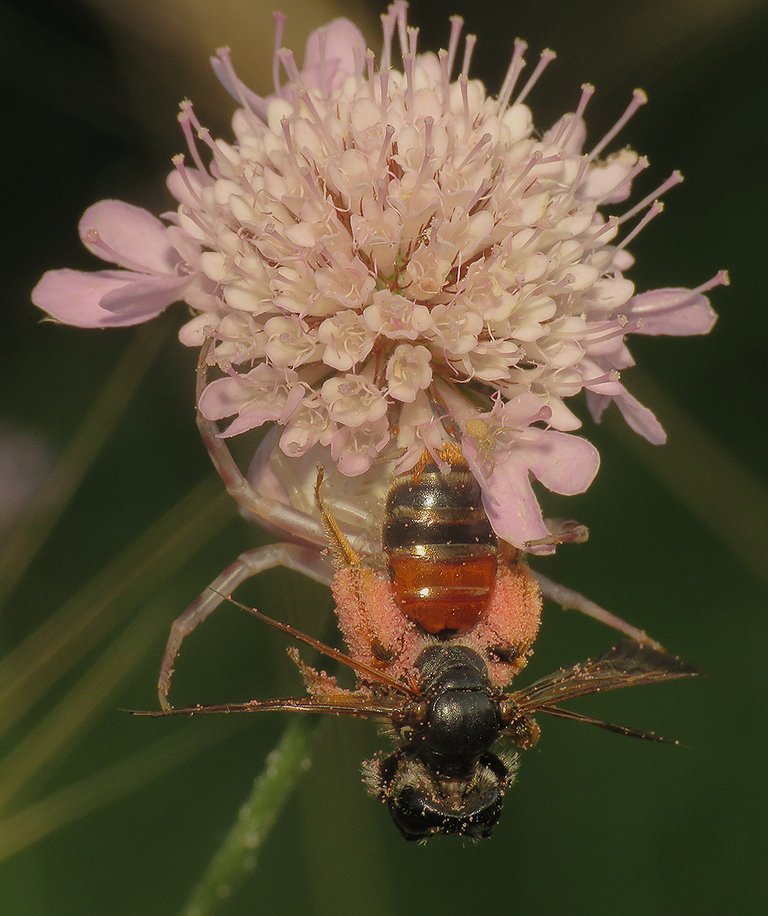
When I first noticed it, the scene looked like this. A bee hanging upside down from the cluster of tiny Knautia arvensis flowers.
Only upon coming closer, did I notice the crab spider under the flowers. The Thomisus onustus was probably waiting in ambush on the flowerhead where the bee was caught upon landing. The area under the flowers provides more safety when eating the prey. If you enlarge this picture by clicking on it, you may notice a very small detail that I didn't notice this evening on the meadow when the photograph was taken, but only an hour ago, on the PC screen while preparing this post. It's another minuscule crab spider on the flowers, and you can take a better look at it in the following picture.

Here I cropped the image and wrote a bit of text in Photoshop to help you locate the little thing. It's a baby crab spider, but I'm not sure about the exact species. Could it be a juvenile Thomisus onustus? I don't know. Maybe.

This scene was photographed half an hour later. On the same meadow, and on the same kind of plant.
But the hunter and the hunted are different. The Runcinia grammica crab spider has caught a butterfly. The Melanargia galathea butterfly.

It was getting late, and the light was low, so the easiest way to get a decent photograph was by using the internal flash of my camera.
But the scene looked much better in ambient light, so I mounted the camera on my backpack and took a couple of shots that show the evening atmosphere the way I experienced it there in the meadow just before dark.
One thing that you can notice in these photographs, is that the spider is considerably smaller than the butterfly. When the prey is caught in the cobweb is easy to understand how the smaller spider can cope with larger prey. But how come the butterfly wasn't able to make at least a short flight with the small spider attached before dying?
Well, a crab spider's venom is pretty strong and paralyzes the victim instantly.
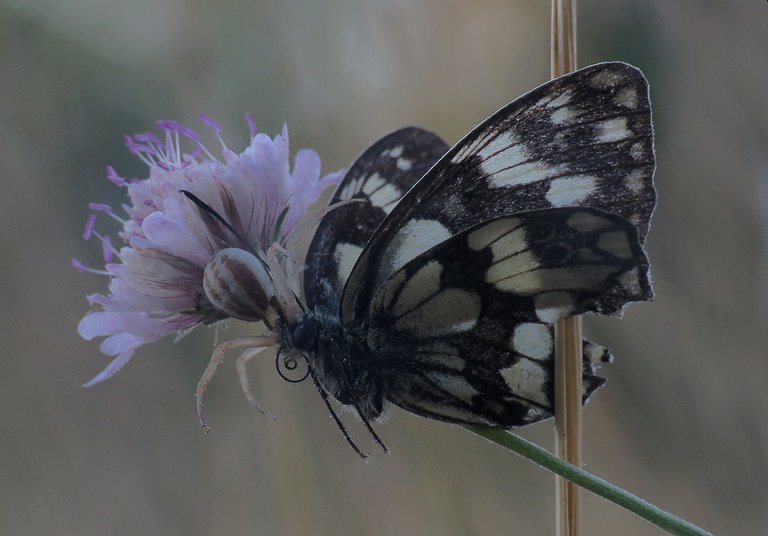
The Runcinia grammica in this series of photographs is a female.
The following photograph was taken in the same meadow, also just before dark, but a couple of days ago.
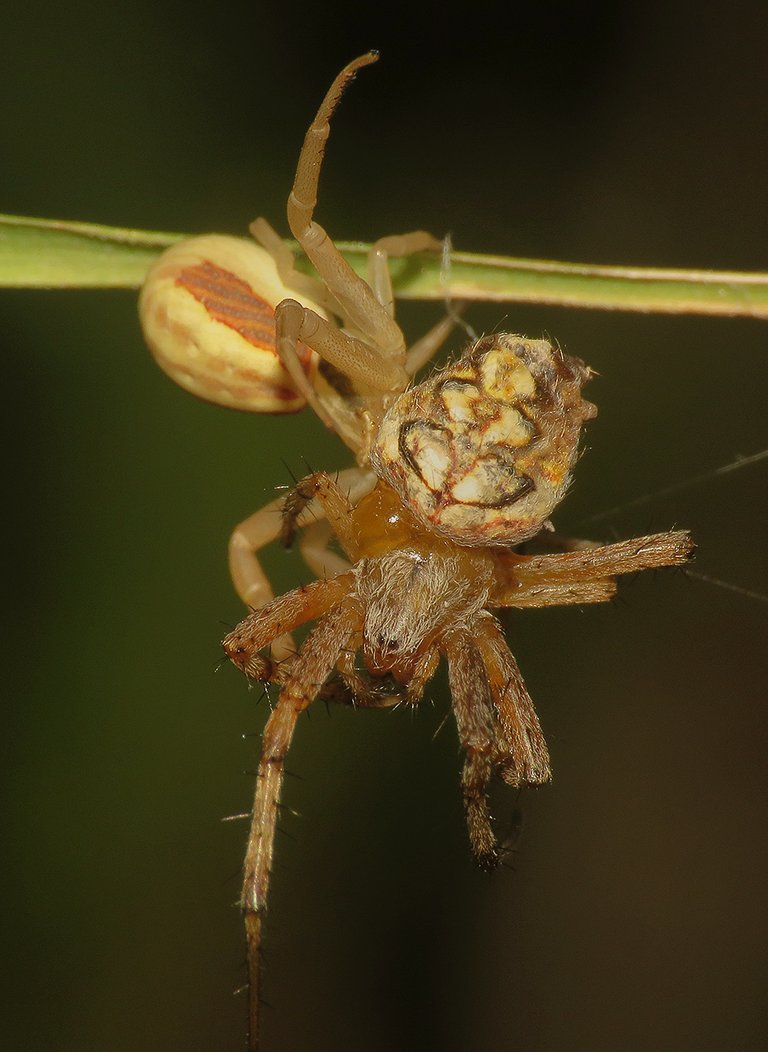
For a minute or two, I was convinced that I'm looking at the living Neoscona adianta spider hanging on the leaf of grass. Neoscona adianta is an orb-weaving species from the Araneidae family. A predator with a very different style of hunting. But in this case, the predator became prey.
This was the first time I saw the Runcinia grammica catching an orb-weaver.
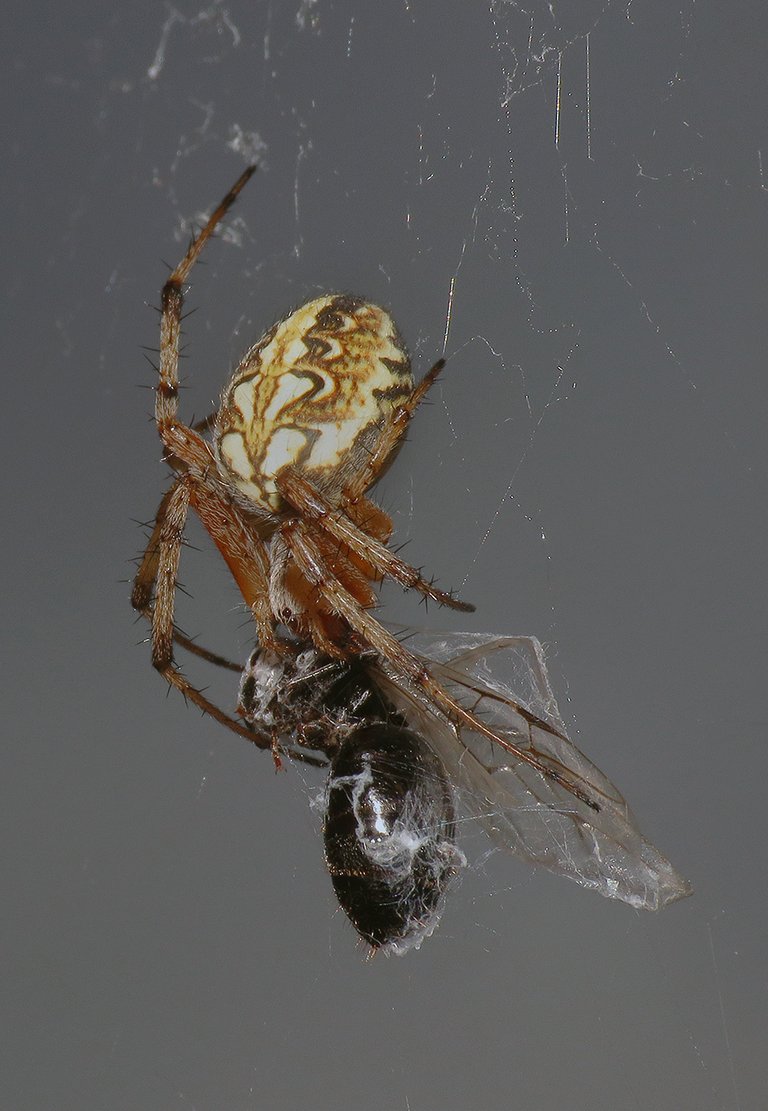
Not far from there. a meter, meter and a half above the scene, another Neoscona adianta was safely feeding in the center of its orb. This spider has caught a flying ant.

Argyrodes argyrodes is a small spider from the Theridiidae family. These kleptoparasitic spiders live on the webs created by orb-weavers and feed on remains of the host's meal and small prey caught in the web built by the Araneidae. Spiders from the genus Argyrodes of the Theridiidae family are commonly known as dewdrop spiders.
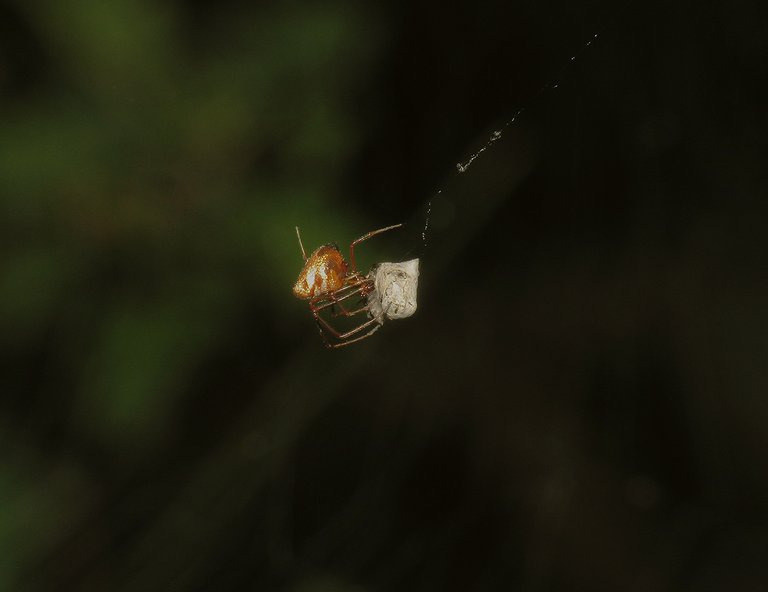
The dewdrop spider in these last two shots was photographed on the lower edge of the web built by the Neoscona adianta.
AND THAT'S IT. AS ALWAYS IN THESE POSTS ON HIVE, THE PHOTOGRAPHS ARE MY WORK - THE END.
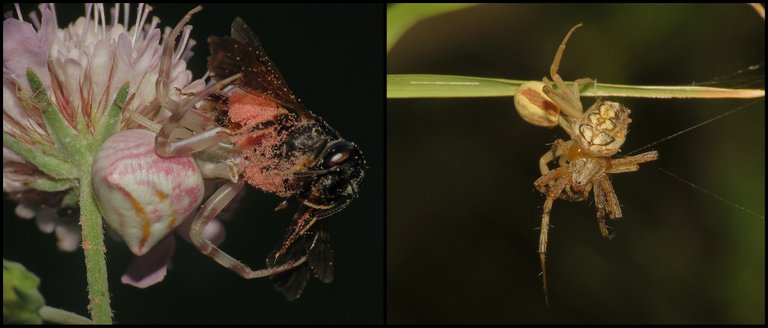
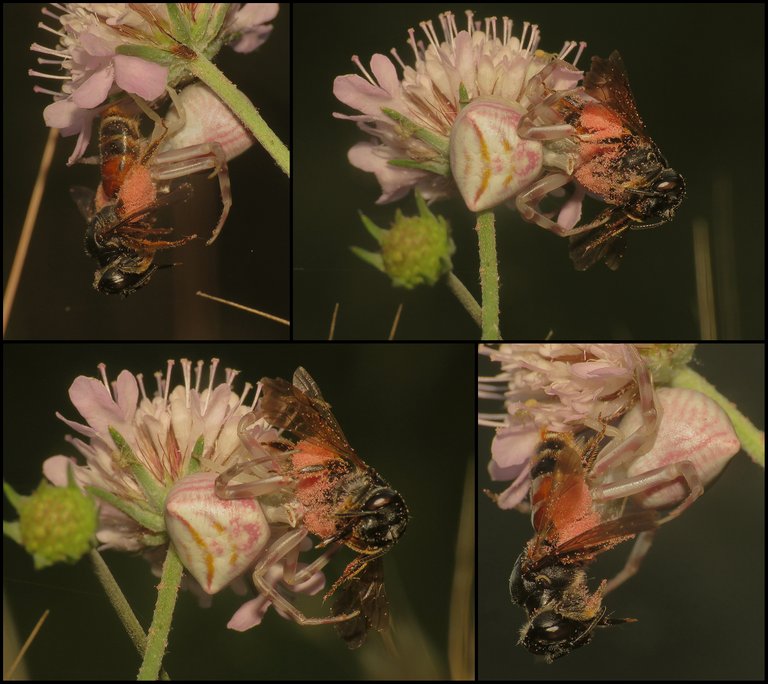
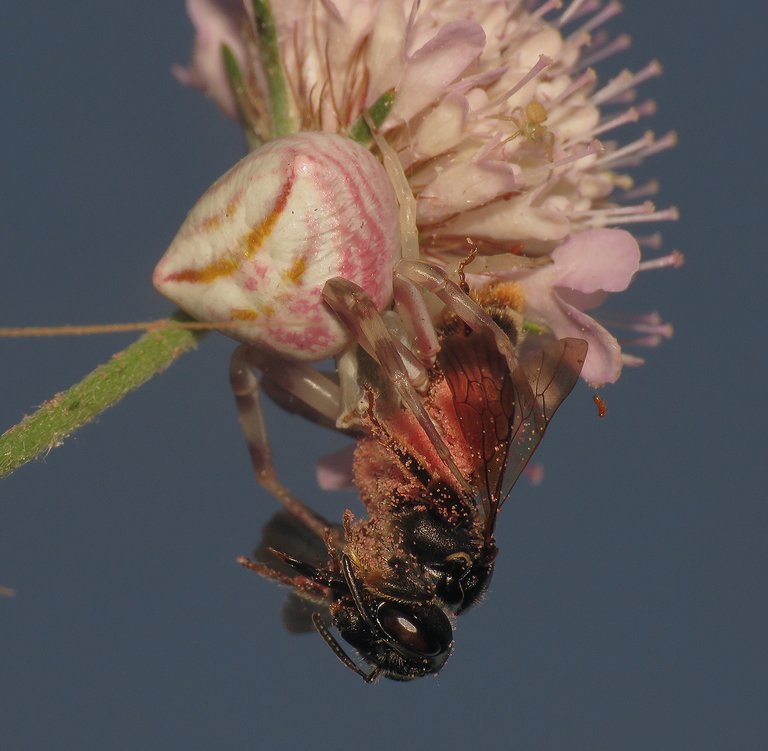
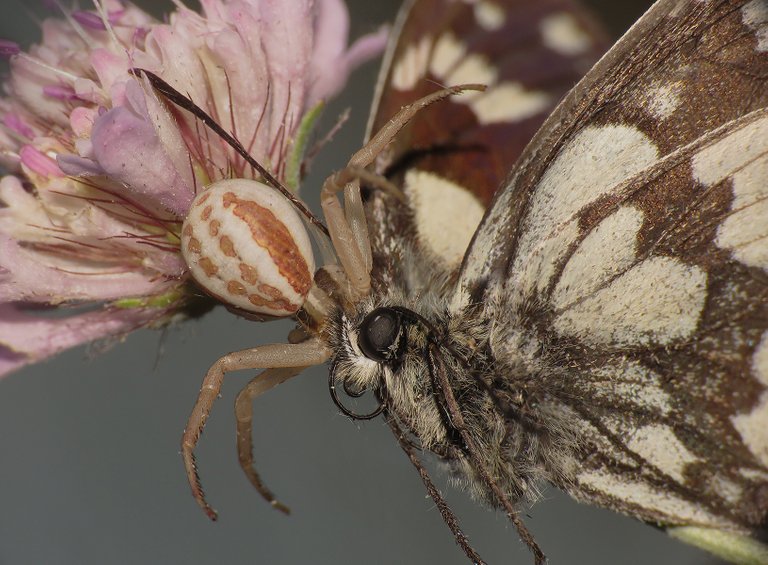
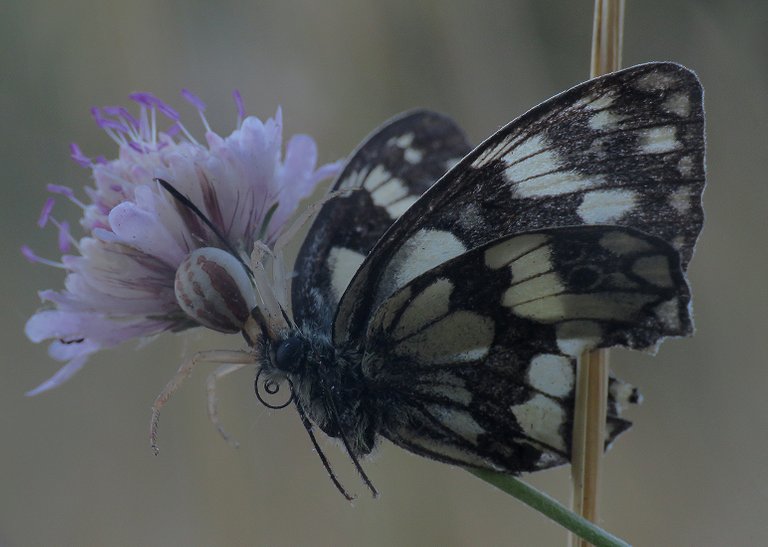

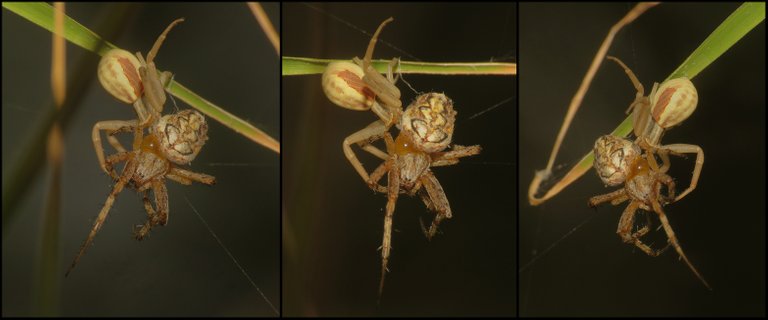
As usual, perfectly captured and well described!
Did it take long to find these catches?
!WINE
Congratulations, @valerianis You Successfully Shared 0.100 WINEX With @borjan.
You Earned 0.100 WINEX As Curation Reward.
You Utilized 1/1 Successful Calls.
Contact Us : WINEX Token Discord Channel
WINEX Current Market Price : 0.166
Swap Your Hive <=> Swap.Hive With Industry Lowest Fee (0.1%) : Click This Link
Read Latest Updates Or Contact Us
Such a clear and detailed photographs @borjan 😎 great captures.
Yes, I had to look closely where the spider was. I saw… and seeing the juvenile in there too, what a surprise.
Thanks for sharing this with us 😁👋🏻 Have a wonderful weekend!
It looks amazing! BTW, remember you can a few sources to back up your statements about the species.
Next time I will. 🙂 I promise. This time the old routine made me forget about that possibility. The post was already published when I thought: Damn, I could put a link or two here.
Technically, I still can. But 🙂 this is an old post now. Not very old, but kinda old and done, so I'll make the next one with some references in mind.
Cool!
Thanks for your contribution to the STEMsocial community. Feel free to join us on discord to get to know the rest of us!
Please consider delegating to the @stemsocial account (85% of the curation rewards are returned).
You may also include @stemsocial as a beneficiary of the rewards of this post to get a stronger support.
Thank you.
Very nice picture mate.
as usual each of your photos looks very extraordinary and very impressive.
How a tiny species of spiders is preying on larger insects, almost 10 times bigger than him. It is the paralyzing venom that immediately affects the victim to fall asleep and become a juiciest prey.
I saw this one on Wikipedia, this looks like a perfect crab like spider. They are known as Gasteracantha cancriformis and they weave the web.
Amazing captures and perfectly timed photos.
!PIZZA
PIZZA Holders sent $PIZZA tips in this post's comments:
@emaxisonline(1/5) tipped @borjan (x1)
Learn more at https://hive.pizza.
Congratulations, your post has been upvoted by @dsc-r2cornell, which is the curating account for @R2cornell's Discord Community.
Very cool about spiders hunting!